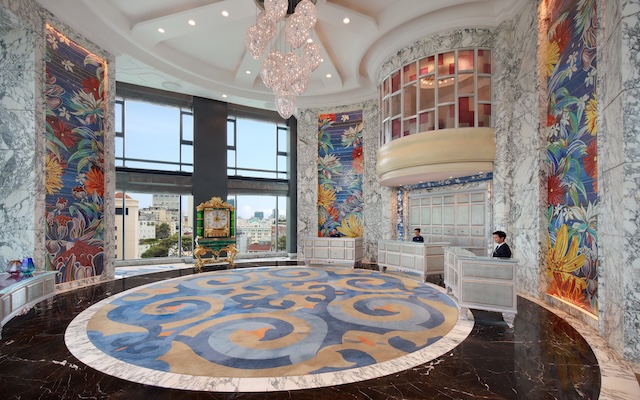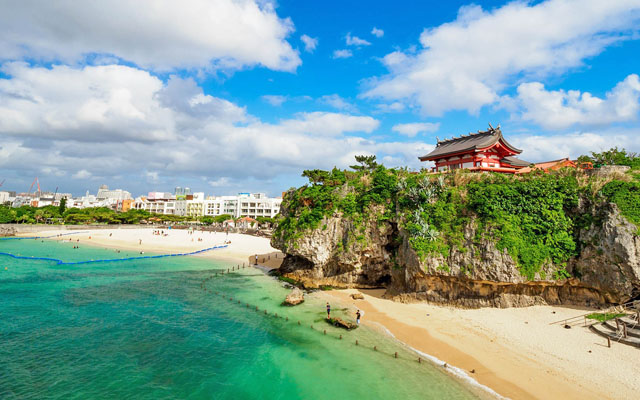Tourism New Zealand has been busy in Asian traveller markets, inspiring visitation among consumers with innovative destination campaigns and inking trade partnerships to convert interest into bookings, shares Gregg Wafelbakker, general manager Asia
 Last July, you shared with us Tourism New Zealand’s intentions to drive year-round tourist arrivals, particularly through encouraging visitation during the off-peak seasons from March to November. How is that coming along?
Last July, you shared with us Tourism New Zealand’s intentions to drive year-round tourist arrivals, particularly through encouraging visitation during the off-peak seasons from March to November. How is that coming along?
Across the 10 markets in Asia where we operate, most holiday periods fall within New Zealand’s off-peak period. So, we have been able to lean heavily into a behaviour that already exists in Asia.
We have done campaigns to encourage more travel to New Zealand during our off-peak season. One good example is the work we are doing in China. We have a target audience of over 60 million consumers in China, and about 10 million of them are ready to book. That’s a huge audience. We shaped this audience’s travel intentions towards experiencing New Zealand in autumn and winter.
China and New Zealand have counter seasons. When it is summer in Shanghai, Beijing and Guangzhou, New Zealand gets its winter. So, New Zealand offers a cool break for the Chinese.
The Chinese have just taken their long Labour Day holidays (May 1 to 5), which falls within New Zealand’s off-peak. Did you get good and strong arrivals during this period?
We don’t have data yet; it is still too soon to tell. But what I have heard from the trade here is that there was an uplift in Chinese arrivals in April.
Besides the off-season push, what other destination campaigns are you most proud off?
Tourism New Zealand did a lot of activities last year, and what we do varies market to market across Asia.
But if I had to pick one recent activity that really stood out for me, it would have to be our work with Minecraft. It was a wonderful opportunity to lean into what started off being a movie filmed in New Zealand. We saw that we could leverage A Minecraft Movie to build more awareness for New Zealand.
We teamed up with Warner Bros Pictures and Mojang Studios to launch a world-first destination DLC (downloadable content) for Minecraft, enabling players worldwide to explore New Zealand in-game. That DLC has six iconic New Zealand spots, including Waitomo Caves (Waikato), Rotorua (Bay of Plenty), Kapiti Island (Wellington), Abel Tasman (Nelson/Tasman), Tekapo (Mackenzie), and Doubtful Sound (Fiordland).
We are also bringing more KOLs down to New Zealand to have them immerse in those same experiences they got through the Aotearoa New Zealand DLC.
Often, when we achieve earned media to build awareness for New Zealand, it is difficult to convert attention into actual bookings. So, we built bookable itineraries that feature some of those iconic experiences in the Aotearoa New Zealand DLC.
The Minecraft campaign is still operating in some markets at the moment, it’s not over yet, so we don’t have results of the impact.
(Editor’s note: According to data insights firm Demandsage, the Minecraft game had over 204.33 million monthly active players as of December 2024. A Minecraft Movie was released in the US in April and is being shown in cinemas now across Asia)
Doesn’t Minecraft target a rather young audience? Is Tourism New Zealand intending to use the power of persuasive children to get their parents to book a trip to New Zealand?
That’s good question. Surprisingly, the average age of a Minecraft gamer is in the mid-20s. That surprised me. My children play the game. Well, no doubt the game is played by all ages, across generations.
New Zealand’s location on the globe requires travellers to spend quite a bit of money to get to. As such, it is not a budget destination. Would travellers in their 20s possess the buying power for New Zealand?
Well, there is a growing audience of young, high-value travellers. But our work with Minecraft does not just target gamers. The campaign reaches beyond gamers through lifestyle influencers. Minecraft was just the hook.
Is there another campaign that you are proud of?
I want to call out our work in China with Xiaohongshu. We recognise the importance of Xiaohongshu as the number one platform in China for travel inspiration and travel planning. It has a very, very busy ecosystem, with 80 million content creators. We chose to work with 15 content creators, who came and explored New Zealand and then created really rich and beautiful imagery and videos to share on the platform.
Their content also included detailed itineraries that address the booking barriers that we have. One of the biggest barriers to booking a holiday to New Zealand is the knowledge gap. What’s the weather like? How do I get there? How do I get around?
Increasingly, we are also trying to connect such travel content onto booking platforms. We have some work with Fliggy (a popular online travel platform in China) to pull traffic through and get bookings.
Are there certain destinations in New Zealand that you would like more Asian travellers to know about and give it a go?
We want everybody to experience as much in New Zealand as possible. There are very popular routes that people know about, and I would encourage everyone to go for the iconic experiences. On top of that, I would like them to explore a little bit further, you know, by just going into some of the smaller towns and other parts of the regions. There’s a real richness that off-the-beaten-track places offer.
I would also encourage our visitors to talk to our people because one of the distinct unique propositions for us is our people. Every New Zealander loves to share and talk about the home that they live and grew up in.
When I brought my then-partner now wife to New Zealand for the first time, she found the people more than the place as being the most memorable.
I think the point of difference for New Zealand is how we bring the landscapes, scenery and products together so well with the people and culture. There is a Maori word, manaakitanga, which broadly translates into kindness, sharing, and embracing, and that is how New Zealanders demonstrate their hospitality. Yet, it is deeper than just showing hospitality because we want to learn about you as you learn about us.

















